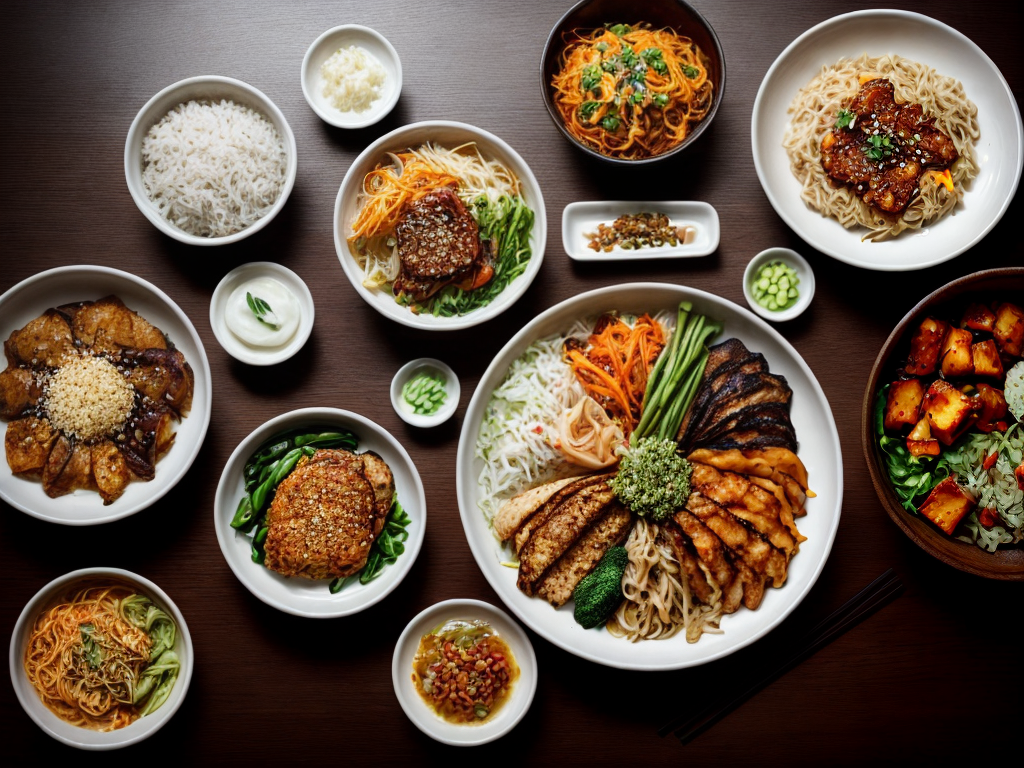Korean cuisine is renowned for its bold flavors, diverse dishes, and vibrant colors. However, for those with gluten intolerance or celiac disease, navigating Korean food can be challenging due to its heavy reliance on wheat-based ingredients like soy sauce and wheat flour. In recent years, there has been a growing awareness and adaptation of gluten-free options in Korean cooking, allowing more people to enjoy this rich culinary tradition without compromising their dietary needs.

Understanding Gluten-Free Korean Food
Gluten-free Korean food emphasizes dishes that avoid traditional gluten-containing ingredients. This includes replacing regular soy sauce with gluten-free tamari or using alternative grains like rice and corn instead of wheat. These adaptations ensure that individuals who are sensitive to gluten can still savor the authentic flavors of Korean cuisine.
Traditional Korean Dishes Made Gluten-Free
-
Bibimbap: A popular dish made with rice, assorted vegetables, and often topped with a fried egg and meat (optional). Ensure the sauce is made with gluten-free tamari instead of regular soy sauce.
-
Kimchi: Fermented cabbage or other vegetables seasoned with chili pepper, garlic, and other spices. Generally gluten-free, but check ingredients to avoid any hidden sources of gluten.
-
Japchae: Stir-fried glass noodles made from sweet potato starch, typically gluten-free. Vegetables and meat are often added for flavor and texture.
-
Samgyeopsal: Grilled pork belly served with lettuce wraps and various dipping sauces. Ensure sauces are gluten-free, or use alternatives like sesame oil and garlic.
-
Tteokbokki: Spicy rice cakes cooked in a gochujang-based sauce. Use gluten-free gochujang or make a homemade version without gluten.
Gluten-Free Substitutions and Ingredients
-
Gluten-Free Soy Sauce (Tamari): Used as a replacement for traditional soy sauce in marinades, sauces, and dipping sauces.
-
Rice: Substitute for wheat-based noodles or as a base for dishes like bibimbap and rice cakes.
-
Sweet Potato Starch Noodles (Dangmyeon): Gluten-free alternative to wheat noodles, commonly used in dishes like japchae.
-
Cornstarch: Used as a thickener in soups, stews, and sauces instead of wheat flour.
Tips for Dining Out Gluten-Free in Korean Restaurants
-
Communicate Dietary Needs: Inform restaurant staff about your gluten intolerance or celiac disease. They can often suggest suitable dishes or make modifications.
-
Read Labels: When buying Korean sauces or pre-packaged foods, carefully read labels for gluten-containing ingredients.
-
Ask About Preparation: Inquire about cooking methods and cross-contamination risks to ensure your meal is gluten-free.
Conclusion
Gluten-free Korean food is a growing trend that allows individuals with dietary restrictions to enjoy the rich and diverse flavors of Korean cuisine. By understanding ingredients, making simple substitutions, and communicating effectively, anyone can navigate Korean dining with confidence and satisfaction.
Comments on “Gluten-Free Korean Food”